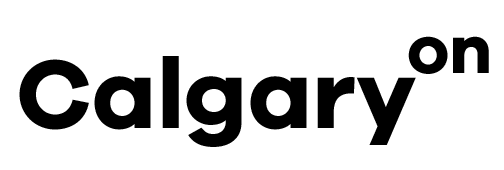Flag Survey: Your Opinion Counts
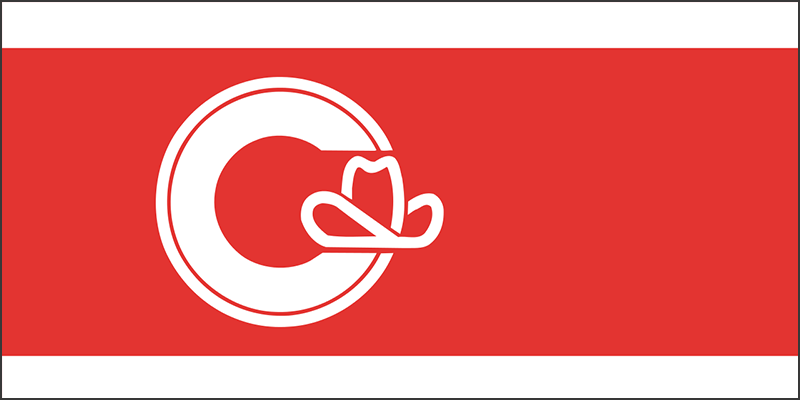
The current flag was designed by the now-retired MLA and alderman Yvonne Fritz and Gwin Clarke. It features the letter "C" with a white cowboy hat which is shaped like a hand on a red background. The hat tucked in the letter "C" symbolises the citizens living inside their city. It was adopted in 1983.
Concerns about the current, little-used flag include that it resembles the Arby's logo and is too 1980's, cowboy-centric and not inclusive of Calgary's diverse peoples and indigenous cultures as noted by Jason Markusoff and Zoey Duncan from the Calgary Herald.
So we've worked with the community to design a new flag for Calgarians:
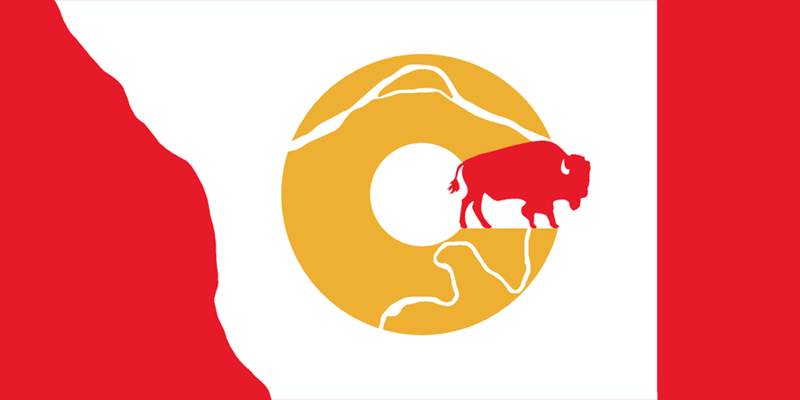
Design concept
We felt that Calgary deserves a flag that speaks to the many different people who make this city great, one that encompasses the natural beauty of the land and rivers here, and reflects its founding in 1875 while respecting the First Nations who lived here for millennia.
The new design includes a circular golden "C", which reflects the sun, nature and wholeness, and has meaning for First Nations, Calgarians and Canadians, as do the red and white colours which are also drawn from the City's coat of arms.
The Bow and Elbow rivers course through the City and join at its birthplace. They are traced in white, and bathe the bison near the confluence and location of the Calgary Zoo. The bison represents the Calgarian spirit and the free roaming creatures that once covered the plains and are now making a comeback.
Red indicates the Rocky Mountains, and outlines the edge of Alberta to the west and east of Calgary. The red and gold infer the energy and warm-heartedness of the land and people. White indicates the snow-covered land and suggests peace, with borders showing where visitors and trade flow in each direction.
We've been inspired by the story of the bison, as have others. The Buffalo Trail bronze sculpture made by JoAnne Schachtel was installed by the Calgary courthouse, as photographed by Bernard Spragg:
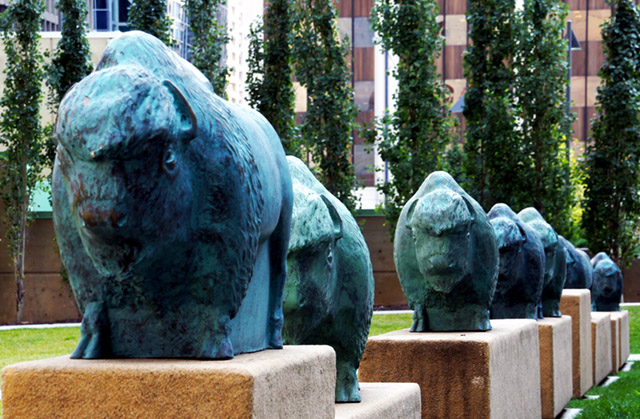
Bronze sculpture of Plains Bison made by Don Toney and located at Fort Calgary:
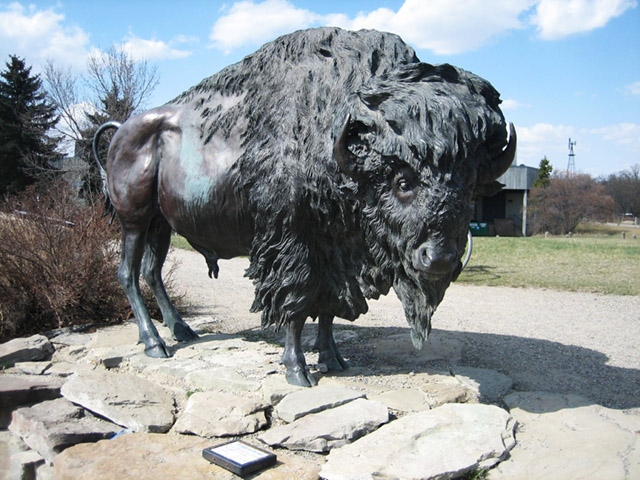
Sunning Buffalo statue by Eric Peterson and located in Twelve Mile Coulee Natural Environment Park, Calgary:
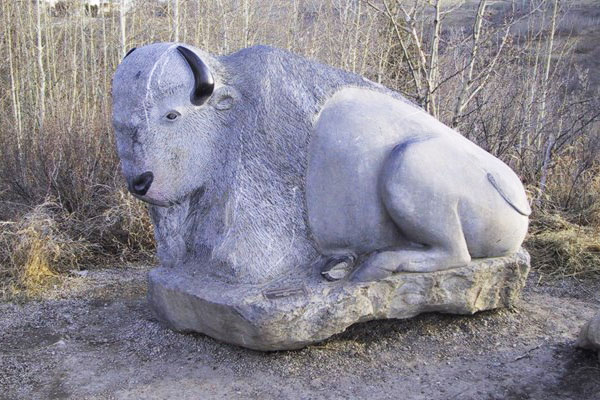
Hundreds of millions of bison once roamed the Great Plains and were a staple of the First Nations, as depicted here by George Caitlin. The arrival of Euroamericans, guns, horses and industrialization almost led to their extinction by the 1850's, with wild herds now recovering.
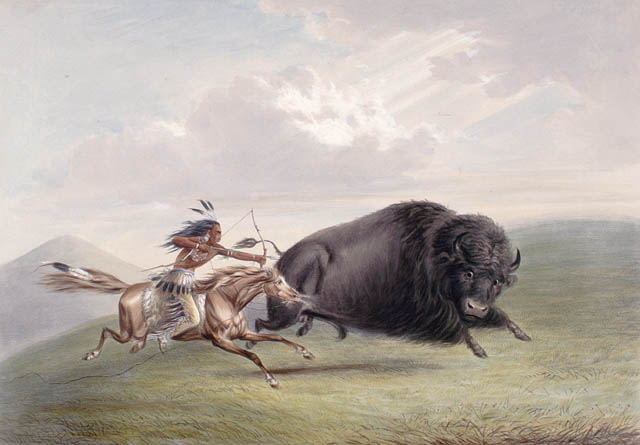
Bison were introduced into Banff National Park in 2017 to re-establish a herd here after a century of their absence (Parks Canada):
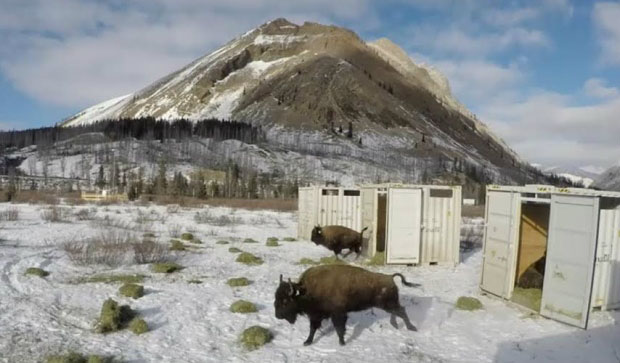
Map of Alberta in Canada showing the location of Calgary:
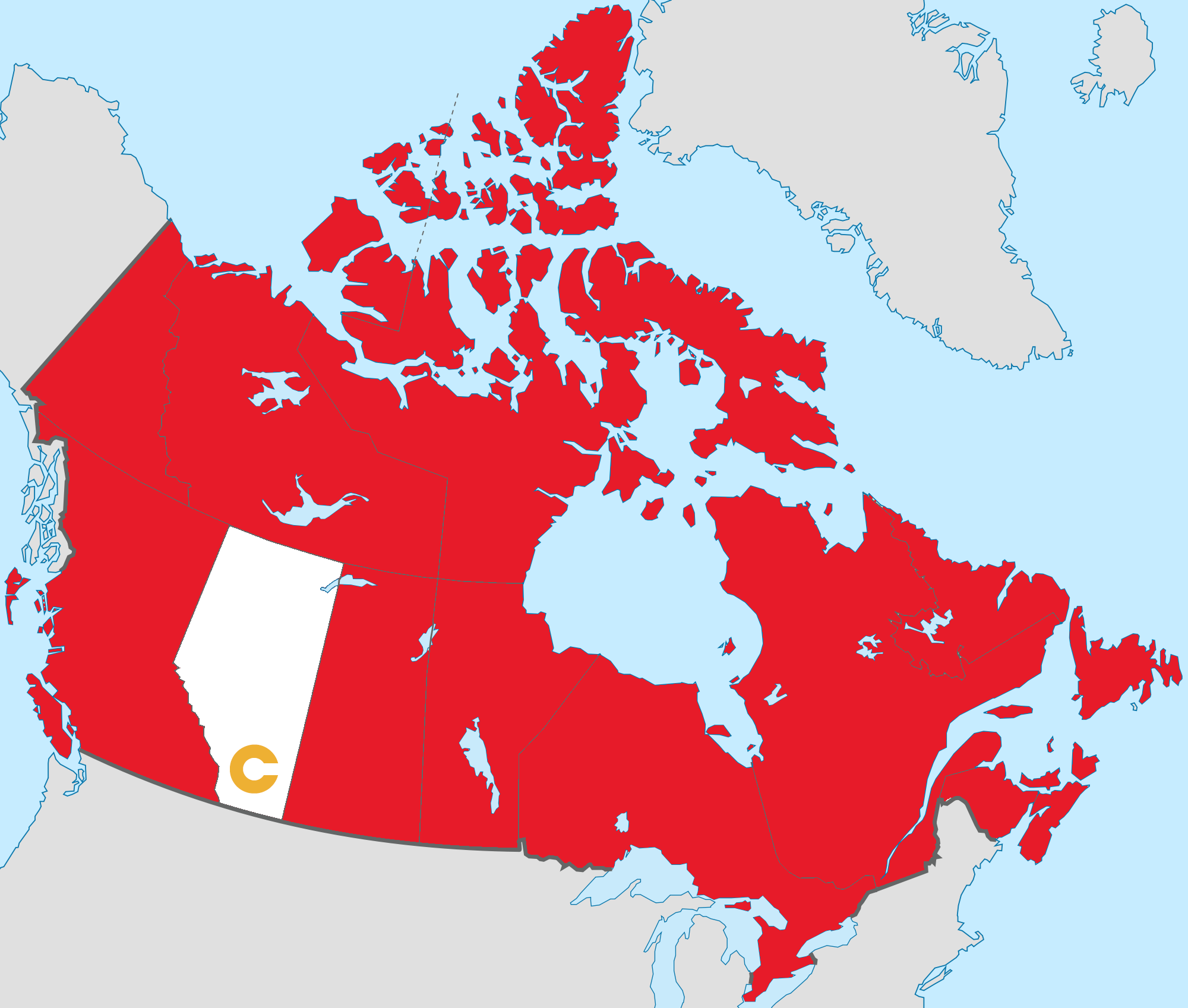
Map of Calgary's downtown made from Google Earth images stitched together by ferreth and showing the Bow and Elbow rivers:
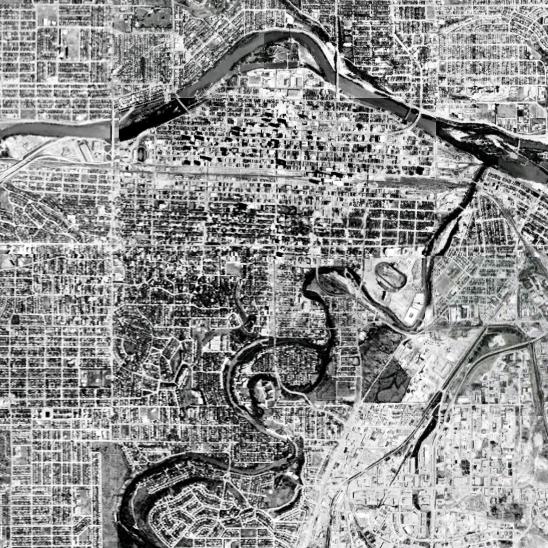
The Coat of Arms of the City of Calgary also features a bison on the green maple leaf at its centre.
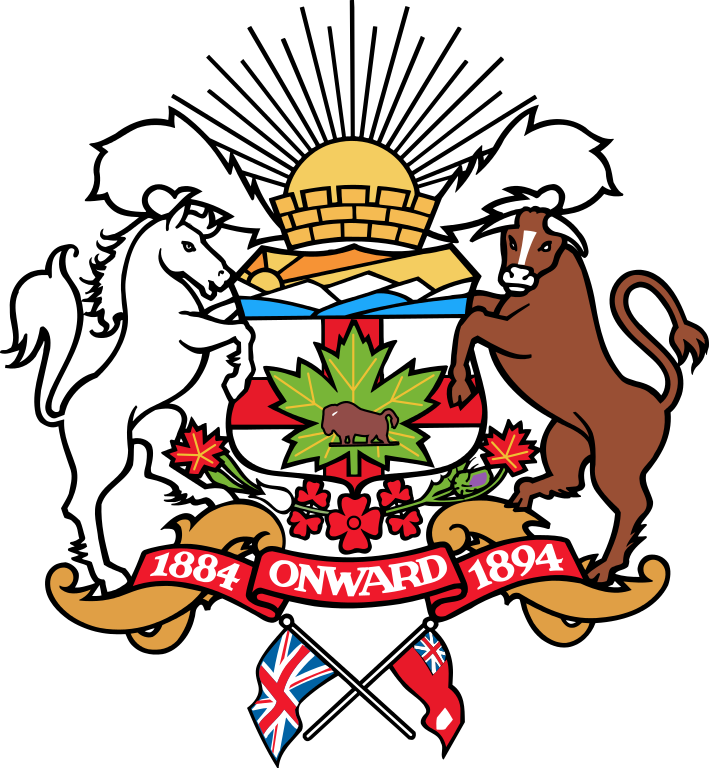
Next steps
We welcome your input as this remains very much an open, community-driven project. We'll share the images for people to use via the creative commons. We'll let you know as a consensus develops.
Thank you for your vote and comments, and for spreading the word.
Note on openness to citizen involvement
The successful branding of Calgary including development of a new city flag depends on the role given to stakeholders.
Citizens are the most important of these, as they are core to the identity of the place, they act as ambassadors (if satisfactorily included), and they ultimately finance the effort (and can jettison it if excluded).
According to Kavaratis (1) "there is an urgent need to rethink the role of stakeholders towards a more participation and involvement-orientated practice" rather than being paid “lip service” or being considered a “necessary evil”.
In fact, it is apparent that "city brands that are developed behind closed doors and do not reach out to a wide range of stakeholders, fail".
A study by Eshuis and colleagues (2) shows that citizen involvement in the process is rare but, when it occurs, it enhances the quality of place marketing. Moreover the emotions and feelings of the commuity become integrated, leading to genuine outcomes.
In reality, it is the residents who are most able to communicate informal and authentic insider information to wide audiences according to Braun et al. (3). They are "living the brand", and are invaluable champions of the place. The development of an inclusive brand also provides a way to bring together diverse communities.
The best way to engage citizens is surprisingly easy. According to Zenker and Seigis (4), what citizens most want is to be asked for their opinions, and to have their views respected.
Participation should be enabled not just at the initial, visioning stage. Ideally there should also be accessible support of proposals and monitoring of their progress, as suggested by Zenker and Erfgen (5). This empowers the people, and can maximize the social and economic impacts.
References
1. M Kavaratzis, (2012) "From “necessary evil” to necessity: stakeholders' involvement in place branding", Journal of Place Management and Development, Vol. 5 Issue: 1, pp.7-19.
2. J Eshuis, EH Klijn, E Braun (2014) Place marketing and citizen participation: branding as strategy to address the emotional dimension of policy making? International Review of Administrative Sciences, Vol. 80(1) 151–171.
3. E Braun, M Kavaratzis, S Zenker, (2013) "My city – my brand: the different roles of residents in place branding", Journal of Place Management and Development, Vol. 6 Issue: 1, pp.18-28.
4. S Zenker, A Seigis, (2012) "Respect and the city: the mediating role of respect in citizen participation", Journal of Place Management and Development, Vol. 5 Issue: 1, pp.20-34.
5. Sebastian Zenker, Carsten Erfgen, (2014) "Let them do the work: a participatory place branding approach", Journal of Place Management and Development, Vol. 7 Issue: 3, pp.225-234.
